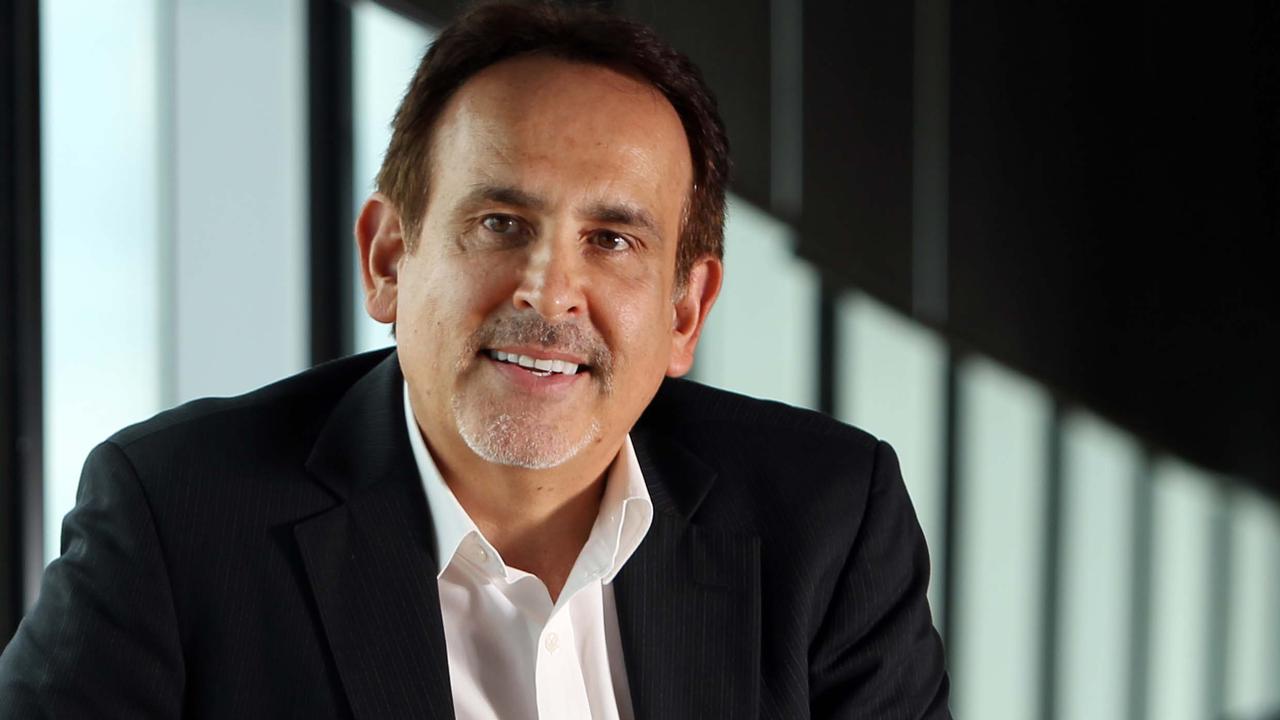ASX faces board challenge over failure of its CHESS replacement program
Two market figures are concerned the ASX board lacks the expertise to handle its massive CHESS replacement program after the failure of the first attempt.

Business
Don't miss out on the headlines from Business. Followed categories will be added to My News.
Two top sharemarket executives want shareholders to back a push to shake up the Australian Securities Exchange’s board, as the market operator faces regulatory court action over a $300m project to replace its ageing CHESS clearing and settlement system.
Former ASX executive Philip Galvin and ex-Nasdaq senior vice-president Bob Caisley are seeking seats on the board at the upcoming annual general meeting.
This comes amid shareholder anger over the ASX’s disastrous “blockchain” CHESS replacement scheme, and legal action from the corporate regulator after the market operator wrote off $255m in technology costs after dumping the repeatedly delayed project.
Mr Caisley and Mr Galvin warn the current management team of the ASX was not prepared to grasp the challenges of the CHESS replacement scheme.
The two say they decided to seek board seats in the wake of the Australian Securities & Investments Commission suing ASX, alleging the market operator withheld bad news about its CHESS replacement scheme from investors.
Mr Galvin, a lifetime market figure who retired from the ASX in 2007, said it was clear the market operator lacked the management expertise to handle a massive project like the CHESS replacement.
The former ASX and Sydney Futures Exchange executive said he had previously sought to raise concerns about the CHESS scheme prior to the move to dump the block chain replacement.
This included calling Reserve Bank governor Michele Bullock and raising the issue with ASX’s then-CEO Dominic Stevens, and former and current chairs Rick Holliday-Smith and Damian Roche.
But he said he was assured by ASX management that everything was under control.
Mr Galvin said there were questions around the current board, many of whom backed the previous strategy and disclosures, and their capacity to manage the ASX’s latest attempt to replace CHESS.
“I see no disclosures other than let’s throw consultants at this and see what happens,” he said.
“You can’t really take public disclosures as the way of getting confidence, because it’s a bit too early for anyone to jump up and down and say the things like, ‘we started six months ago and now it’s all going off the road’, so you won’t actually get any sense of that for a substantial period of time, and at that point it will be too late.”
ASX signed an agreement in November last year with Indian conglomerate Tata Consultancy Services to replace its existing cash equities clearing and settlement, using the TCS BaNCS platform.
At the time, the ASX told investors the TCS platform would “provide a reliable, supportable and scalable platform that meets the needs of the Australian market now and into the future”.
However, several well-placed market sources expressed their surprise at the time the ASX pushed forward with the BaNCS system, noting the trouble Tata had faced in other markets when attempting to implement its platform.
Mr Caisley said he wanted to offer the ASX board his decades of experience running massive technology projects, including a Nasdaq clearing, settlement and depositories platform.
He said he had implemented similar systems in Singapore, Indonesia, Saudi Arabia, Chile and Argentina.
“I thought Nasdaq would have a good chance, and when they selected TCS, I was astounded,” he said.
The former Singapore Exchange CIO said he was open to a number of technology options, and had experience with the London Stock Exchange solution.
Mr Caisley said he was concerned about the current $250m price tag quoted by ASX to replace its CHESS system, as well as the timeline through to 2032.
“My work experience tells me that something’s wrong, that they need help, and it may well be they just need to be helped to move in the right direction,” he said.
“I don’t understand why the costs are so high. But regardless of the costs, I know my experience of implementing these solutions will be of benefit to ASX and the board, because the board are on the hook.”
Other market figures contacted by The Australian also raised questions over the BaNCS system, with one source with direct knowledge of negotiations to replace another country’s clearing and settlement system noting it would cost around $10m upfront followed by $5m in ongoing costs to take up a rival software solution.
Sources close to the ASX pointed to the TCS support for clearing and settlement upgrades for exchanges in Finland, New Zealand, South Africa and Toronto, something noted by the ASX in November last year.
The Canadian TMX picked TCS in June 2017, but efforts to replace the clearing and settlement services on the exchange are yet to go live, with the project well over budget.
An ASX spokesman said the market operator selected TCS BaNCS to replace CHESS after a “comprehensive process” which involved a process that “underwent an independent assessment, provided by EY”.
Mr Caisley said there appeared to be a lack of direct market tech experience at ASX board level.
A number of directors have sat on the board for nearly a decade, despite a nearly 50 per cent turnover in their ranks since 2021.
ASX director Yasmin Allen has been on the board since 2015 and is a member of the technology committee.
Westpac’s former group chief information officer David Curran joined the ASX board in March 2022 and was appointed inaugural chair of its technology committee.
Melina Conrad, a serial board member across multiple organisations, has sat on the ASX since 2016 and is also a member of the Technology Committee.
An ASX spokesman said the market operator would only be putting up former Australian Prudential Regulatory Authority chair Wayne Byres for election at its upcoming AGM on October 28.
The ASX’s constitution provides for up to 15, compared with 10 currently.
Mr Roche, the ASX chair, is widely expected to leave in the wake of ASIC’s charges against the market operator, but a spokesman declined to reveal if he would offer his resignation in October.
“At the time of his re-election, he told shareholders that he was in his final term and he was focused on board renewal and chair transition,” an ASX spokesman said.
Several groups are calling for Mr Roche to go, with others warning the ASX again faces a strike over its remuneration report. It narrowly avoided a vote last year that may have forced a board spill.
Australian Shareholders Association chief executive Rachel Waterhouse said Mr Roche should resign now.
More Coverage
Originally published as ASX faces board challenge over failure of its CHESS replacement program





